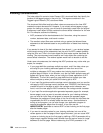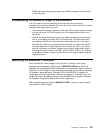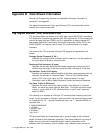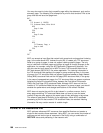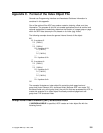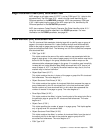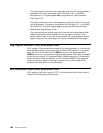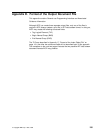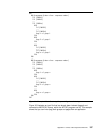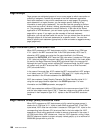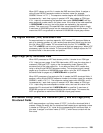
BDI
IEL Groupname=G1
TLE
...
TLE
...
IEL Groupname=Gn
TLE
...
TLE
EDI
This format is useful to reduce the size of the index object file, but it allows
manipulation only at the group level; that is, you cannot obtain the offset and size
information for individual pages. You also lose any indexing information (TLEs) for
pages; the TLE structured fields for the pages still exist in the output print file,
however.
Page-Level Index Element (IEL) Structured Field
If INDEXOBJ=ALL is specified, ACIF creates an index object file with the following
format:
BDI
IEL Groupname=G1
TLE
...
IEL Pagename=G1P1
TLE
...
...
IEL Pagename=G1Pn....
...
IEL Groupname=Gn
TLE
...
IEL Pagename=GnP1
...
IEL Pagename=GnPn
TLE
...
EDI
This example contains IEL structured fields for both pages and groups. Notice that
TLE structured fields are associated with both pages and groups. When ACIF
performs the actual indexing function, it does not support page-level indexing;
therefore, it cannot create TLE structured fields for individual pages. Consequently,
it can create only page-level IEL structured fields without any associated TLE
structured fields. In this example, where an application created an indexed AFP
print file containing both page-level and group-level TLE structured fields, ACIF can
create IEL structured fields for the appropriate TLE structured fields.
An index object file containing both page-level and group-level IEL structured fields
can provide added flexibility and capability to applications that operate on the files
created by ACIF. This type of index object file provides the best performance when
you are viewing a file using the Viewer application of AFP Workbench.
192 ACIF User’s Guide



